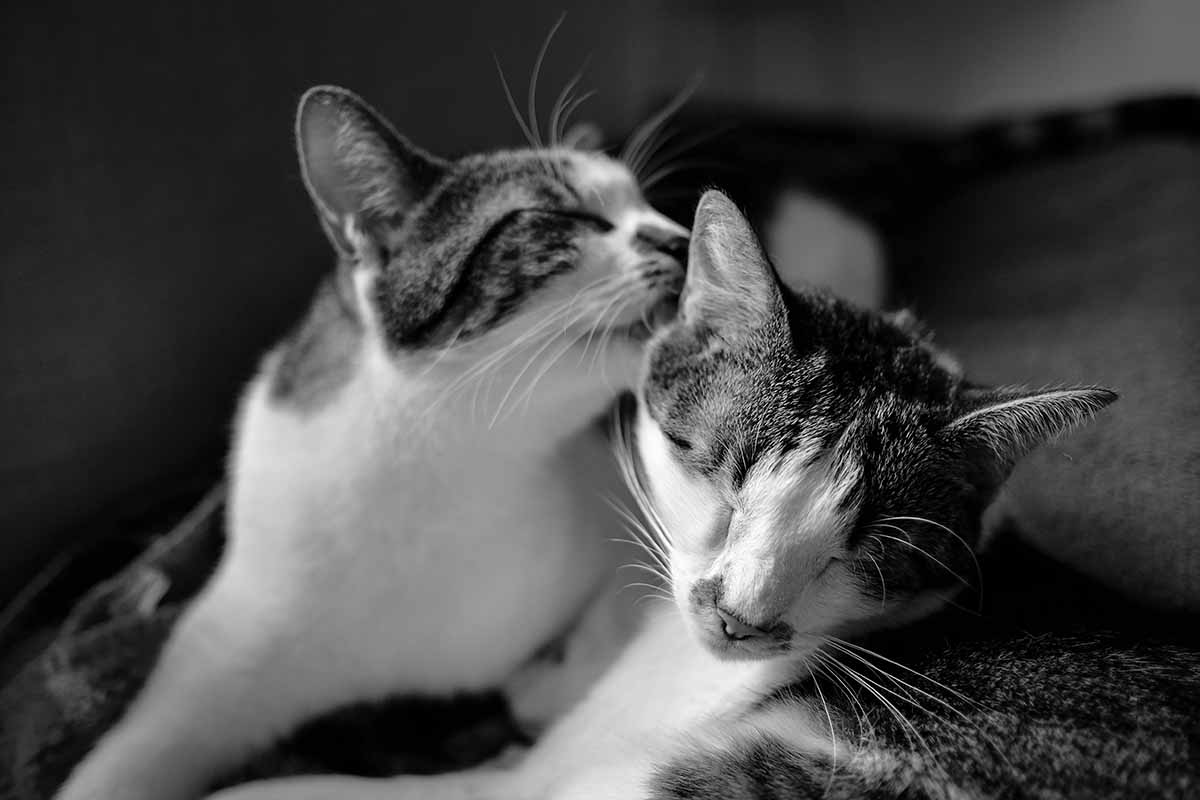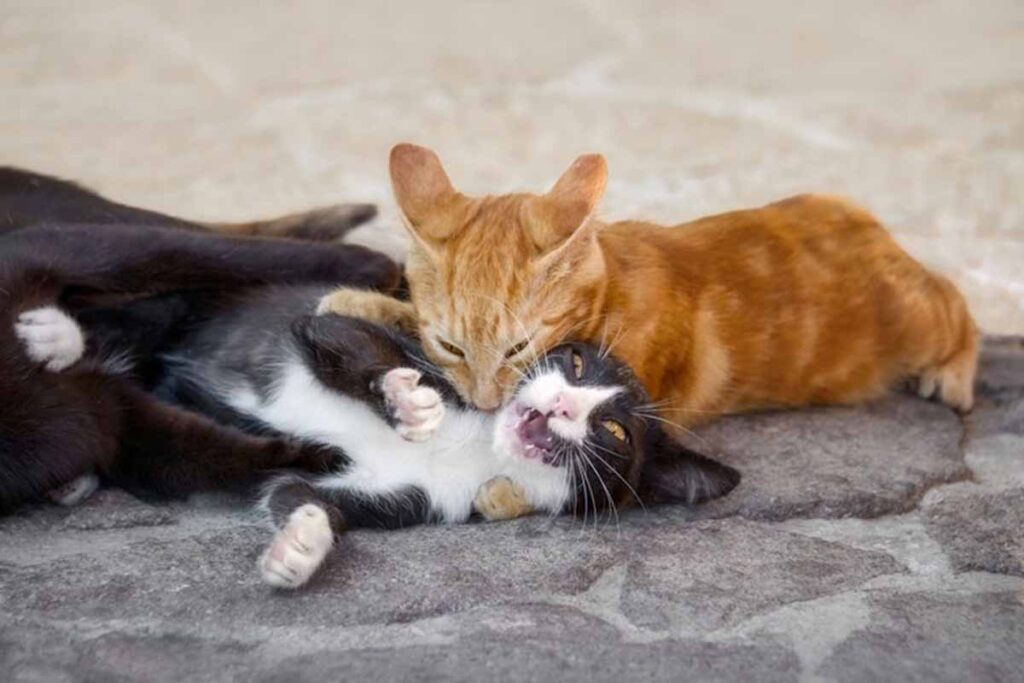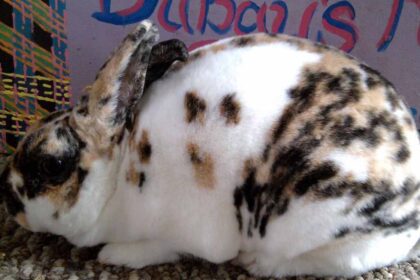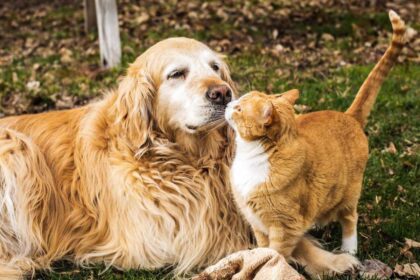In the captivating world of feline relationships, every tail twitch matters. Cats biting necks is a riveting mystery. Beneath the surface, the typical behavior of cats reveals rich social dynamics. Verbal exchange, social order, and emotional expressions are common.
In this long study, we tried to understand the complex way cats communicate with each other. Cats show varied expressions through neck biting, beyond just physical contact. This includes playing, hierarchy, friendliness, and bonding.
Join us to explore the depths of this charming hobby. Let’s investigate the layers of cat communication. By exploring cat neck biting intricacies, we unveil memories through delicate motions. This sheds light on our whiskered companions’ complex world.

What does it mean when a cat bites some other cats’ neck?
In. tom cat communique, one cat biting another’s. neck captivates in cat relationships. This mysterious action carries various hidden meanings beyond just playing or being aggressive. It invites us to explore the intricate world of how cats interact with each other.
Consider this: a cat, appearing out of place during a moment of bonding, gently nips its fellow cat’s neck. This behavior isn’t just random. It’s a subtle way cats communicate within their relationships.
The cat’s neck is a crucial area. It will be the main focus of this connection. It represents consideration, closeness, and hierarchy inside the. feline social shape. Cats establish and strengthen their bonds by biting each other’s necks. This behavior shows various feelings that words cannot fully describe.
Some cats enjoy neck biting as a joyful activity to strengthen their bond. It will become a commonplace language, a hidden code. strengthens their friendship. In these cases, the gentle bites lack the strength of hostile ones.
On the other hand, cats. neck biting may be used to claim authority or create hierarchy. One-way cats show they are in charge is by gently biting another cat’s neck. This behavior helps establish who’s in charge without fighting.
Understanding cat neck biting helps us understand how tomcats interact. It gives insight into their behavior and interactions. It encourages us to notice past the surface and. appreciate the silence.
Why is my cat biting? different cat’s neck
Ah, captivating. international tom cat behavior! If your cat nibbles on another cat’s neck, it’s likely a social behavior. This conduct is deeply rooted in their social interactions.
Let’s resolve the thriller
Social Bonding: Cats, like. Humans transmit affection through bodily touch. Neck biting may be an. illustration of a social bond between tom cat friends. It is their manner of. announcing, “Hey, we are pals!”.
Neck biting can sign. authority in feline society’s difficult hierarchy. The conduct builds a. hierarchy without escalating into outright antagonism. It’s sophisticated. language for pronouncing who holds electricity.
Playful Interaction: Contrary to famous belief, cats join through hard play. If neck biting is followed by fun activities, it may be playful behavior. It’s not aggression.
Cats’ necks are touchy. places, thus biting them might be a signal of acceptance as true with. Letting another cat nibble on a cat’s neck shows comfort and trust in their bond.
If your cats have not been spayed or neutered, they may engage in neck biting during mating. This is extra common in unaltered cats at some stage in the. mating season.
The situation, sounds, and body movements can help understand behavior. If the cat bites gently and purrs, it could be a way to bond socially. If your cats seem unfriendly, consult a vet or animal behaviorist for help. By noticing diffused cues, you can help your furry friends live peacefully. Understand their social interactions better.
A Cat Bites Another Cats’ Nneck, while grooming
Ahh, it’s fascinating. international cat grooming customs! If your cat gently nips your neck while grooming, it’s likely a sign of affection and bonding.
Here’s a hint as to what this conduct approach: Cats often groom each other to show affection and strengthen social bonds. When grooming, if your cat gently nibbles on another cat’s neck, it’s a loving act that brings them closer.
Mutual Trust: Cats show trust by allowing others to brush or chew on their delicate neck areas. It means that they feel. stable and relaxed in an extra’s presence.
Grooming is important for cats to maintain their social structure. It involves occasional neck biting to organize their group effectively. It’s a sensitive way to enhance responsibilities and. connections without resorting to coercion.
Cats have scent glands in their lips. When they groom by gently biting, they might be changing scents. Their social bond gets stronger through this interaction. By strengthening. their common olfactory characteristic, this strengthens their social unit.
Playful Aspect: Cats. normally blend play and grooming together. They play together in social interactive sessions while playfully biting each other’s necks.
Relaxed attitudes, reciprocal grooming, and purring show healthy tomcat behavior. This occurs daily. It stands for the joyous and. loving dating you’ve got along with your cats. It’s a good idea to check how your cats get along. If you see any signs of not getting along, seek advice from a professional. You can understand more about how cats socialize by noticing these small details. Watch your pets play and show love to each other in a joyful way.
The Language of Cats: Unravelling Feline Communication
Cats are skilled in nonverbal communication, conveying messages without using words. They excel in subtle cues for effective communication. Every action they make, like a tail flick or their arching. again, sends a sure message. Deciphering a cat’s social world requires understanding their body language. This includes cues like tail movements and arching back.
Tail Talk: A cat’s tail is. a semaphore which could deliver a number of feelings. A puffed-up tail shows the cat is anxious or tense. A raised tail could mean the cat is excited or happy. A steady graceful may suggest annoyance, while a quivering tail might. suggest joy.
Whisker Wonders: Whiskers. are crucial for conversation, no longer truly lovely embellishments. When a cat pulls its whiskers back towards its face, it may be feeling threatened or protective. Forward-facing whiskers show curiosity and a calm state of mind.
Cats purr when they feel upset, hurt, or sick, but usually, it means they’re happy. To understand why a cat purrs, watch their actions to know how they feel. This helps in decoding the meaning behind their purring.
Neck biting Importance in Feline Social Dynamics: A lovely part of cat communication is when one cat bites another’s neck. Even though it frightens people, this is a crucial part of cat social behavior.
In a group of cats, biting a neck can show who’s in charge. It’s like saying, “You’re the boss,” or “I’m the boss.” The first biting cat shows it’s in charge. The bitten cat may show the other is above it. In homes with many cats, creating a hierarchy is crucial. This conduct happens often.
Cats that nibble each other’s necks may actually show love, not just aggression. Mother cats bite their necks to carry and care for their babies, which helps them bond. Cats grooming themselves may also gently bite their necks to feel better.
Cats communicate through a complex network of body signals that go beyond words. Being aware of diffused cues can improve relationships with our feline friends. Getting to know them better is key. Keep in mind that tail flicking and neck biting are ways cats express themselves. These behaviors are part of the intricate cat language.
Decoding the Mystery: Why Do Cats Bite Each Other’s Necks?
Cats often biting each other’s necks perplexes humans in cat communication. Cats don’t always bite randomly. Instead, they do it for specific reasons that show things about their relationships. Come alongside on an adventure as we try to. remedy the puzzle of why cats chunk different necks.
Caring Attachment: Trimming and Teasing. Cats frequently chunk. their necks gently as a sign of love and bonding. Cats utilize grooming too. develop social bonds, just like a mom does with her kittens. Additionally, when cats nibble and groom, it helps them feel close and part of the family.
Determining Dominance and Hierarchy: In households with multiple cats, setting up a hierarchy is important. This helps maintain order and reduce conflicts. Neck biting plays a key role in this hierarchy by showing submission or dominance. The first biting cat is the boss, and the cat bitten follows the rules. The cats’ peaceful. cohabitation is assured by using this silent language.
Playful Exchanges: The Significance of Biting the Neck. Neck biting is simply one. of the many fun sports that cats are regarded for. Gentle biting, pouncing, and chasing are usual when cats play. These actions help keep cats active both physically and mentally. Cats get better at extra than just looking at these pastimes.
The Trust Factor: Neck Biting as a Display of Trust
The Neck Area Is. Vulnerable: Any animal’s neck is a delicate area. When a cat allows another cat to groom close to its neck, it shows a high level of confidence. Because exposing one’s neck is a. sign of submission in the wild, domestic cats discover that displaying this. vulnerability strengthens their experience of protection and agreement within. their social group.
Security and Mutual Trust in Feline Relationships: In cat friendships, biting each other’s necks shows trust and safety. When cats act in this way, they are displaying a profound diploma of. comfort with each other. Their close bond and trust allow them to relax without fear of harm or worry.
In the end, why cats bite each other’s necks is a complex mix of trust, order, and love. When we understand the intricate social interactions of cats, it enhances our enjoyment. When you see cats biting each other’s necks, remember it’s more than just a game. It’s a way for them to bond and show their complex relationships.
The Science Behind Cats Neck Biting: From Anatomy to Real-Life Stories
Explore the captivating topic of neck biting in the realm of tomcat behavior. Dive deeper into the world of feline technology and behavior. Studying cat anatomy reveals their role in social structures and our bond. Join us on this scientific journey as we link ideas to real-world research.
Examining the Anatomy of Cats: The Science Underpinning Behavior.
Fragrance Trade And Social Networks: Cats have a strong sense of smell. Neck biting helps spread scents. Glands around the neck release pheromones. These scents help cats recognize each other. This way of talking shows how important scents are, along with what is seen and spoken.
Neck-biting Function in Upholding Social Structure: Understanding cats’ bodies helps us understand why they bite necks in social groups. Biting someone on the neck helps show roles and supports hierarchy. It brings harmony and prevents unnecessary fights in social groups.
Case Studies: Real-Life. Examples of Cat Neck Biting
Individual Experiences or Tales: Let’s delve into real stories from cat owners who have witnessed neck biting in their pets. Let’s get closer to understanding these experiences. These memories show how cats’ bond with their owners and with each other.
Cat Observations in Various Social Groups: Studying cats in various social settings offers insights into neck biting behavior. Cats in single or multi-cat environments offer valuable data on this behavior. Exchanges reveal trust, hierarchy, and camaraderie dynamics among old and new connections.
The elaborate interactions. between anatomy, communication, and social structures are shown by the. technology of cat neck biting. By studying theoretical and realistic elements, we learn about cats’ complex language. We approach the gap between behaviors and underlying approaches in developing cats. This scientific journey reveals their excitement.
Understanding Body. Language: Reading the Signs
Selling high quality social dynamics to cats requires understanding their frame language well. Understanding the cues can support our bond with cats, from purrs to body language. Join us as we explore cat body language signs and ways to create a friendly environment.
Positive Signs: Adoring, Calm Posture. Cats use positive body language to show their emotions. This language helps us understand how they feel. A. glad cat will purr, that’s often linked to satisfaction. When they relax, cats feel comfortable and happy in their environment. They show this by having a calm posture, a swaying tail, and ears pointing forward.
Warning Signs: Indices of Aggression or Unease. Understanding cats’ warning signs and symptoms is vital. It helps prevent confrontations and ensure their welfare. An arched again, flattened ears, and. dilated students may suggest discomfort or hostility. Understanding the signs in a cat’s body language is important. An arched back, flattened ears, and big eyes can show discomfort or anger. Recognizing these cues helps prevent fights and promote peaceful living together.

Fostering Healthy Social Dynamics Among Cats
Fostering Happiness Environment for Several Cats: Establishing a good atmosphere is important. It promotes healthful social dynamics in households with numerous cats. To prevent cats from fighting, make sure they have enough food, water, and litter boxes. Having high spots and many cozy spots helps cats claim their space without fights.
Aggressive Behavior Interventions: Interventions are often needed when body language shows signs of potential aggression. Fine methods can help introduce cats gradually to build good relationships. Great hiding spots help cats stay safe by avoiding conflicts and feeling secure.
To be a happy cat owner at home, it’s important to understand cats’ body language well. This knowledge is key to a peaceful and content household. We can design spaces that meet our cats’ social needs. If necessary, we can intervene by recognizing warning signs and key cues. We strengthen bonds between humans and cats. This happens through mutual understanding and communication.
Conclusion
Summary of Main Ideas: We explored how cats communicate to understand their language. We focused on cues like body language and neck biting and the science behind them. Cat owners understand cat cues through purring, body language, and behavioral signals. Watch for signs of aggression or discomfort. Cats have a complex way of communicating with humans, which strengthens their bond.
Helping Cat Owners Understand How Complicated Feline Social Etiquette Is: As we near the end of our journey, we must educate cat owners on tomcat social behavior. Cat owners can create social situations to help their cats live longer. They learn subtleties of their cats’ behavior for more satisfying lives. Accepting the mystery of cat language strengthens the special bond with them. It deepens the connection between people and their feline companions.
Additional Resources and Further Reading
Books on Feline. Behavior: “The Cat. Behavior Answer Book” by Arden Moore “Think Like a. Cat: How to Raise a Well-Adjusted Cat–Not a Sourpuss” by Pam. Johnson-Bennett.
Online Resources for Cat Owners: International Cat. Care The Cat Behavior. Clinic The American. Association of Professional Cat Trainers .
Get a deeper understanding of feline behavior with insightful analysis and guidance. The materials offer helpful pointers for cat owners to improve connections. Cheers to becoming a cat parent!














Comments are closed.